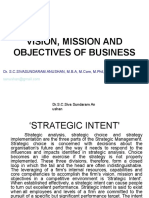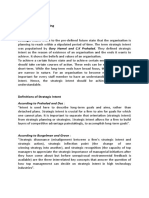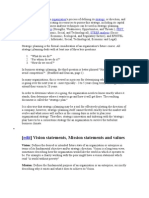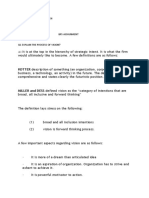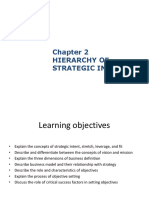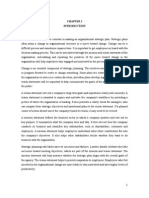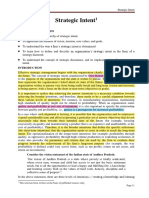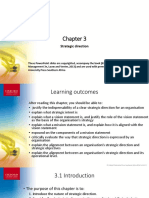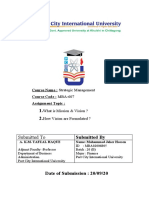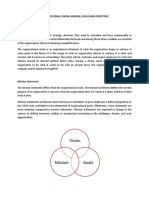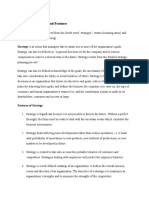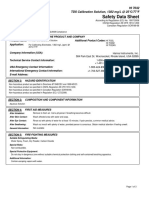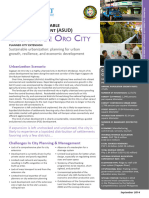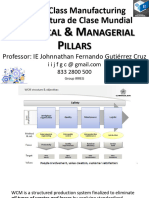0% found this document useful (0 votes)
43 views7 pagesLecture 6
Strategic intent is the foundation for strategic management and involves creating a vision, mission statement, defining the business, and setting objectives. It provides an obsession for the organization and envisions a leadership position. The strategic intent hierarchy ranges from the board's vision to specific objectives. A vision depicts the organization's desired future state and is a powerful motivator, while the mission relates the organization to society. Having a clear strategic intent and vision provides several advantages like fostering experimentation, long-term thinking, and inspiration.
Uploaded by
Shuja MirCopyright
© © All Rights Reserved
We take content rights seriously. If you suspect this is your content, claim it here.
Available Formats
Download as PDF, TXT or read online on Scribd
0% found this document useful (0 votes)
43 views7 pagesLecture 6
Strategic intent is the foundation for strategic management and involves creating a vision, mission statement, defining the business, and setting objectives. It provides an obsession for the organization and envisions a leadership position. The strategic intent hierarchy ranges from the board's vision to specific objectives. A vision depicts the organization's desired future state and is a powerful motivator, while the mission relates the organization to society. Having a clear strategic intent and vision provides several advantages like fostering experimentation, long-term thinking, and inspiration.
Uploaded by
Shuja MirCopyright
© © All Rights Reserved
We take content rights seriously. If you suspect this is your content, claim it here.
Available Formats
Download as PDF, TXT or read online on Scribd
/ 7


